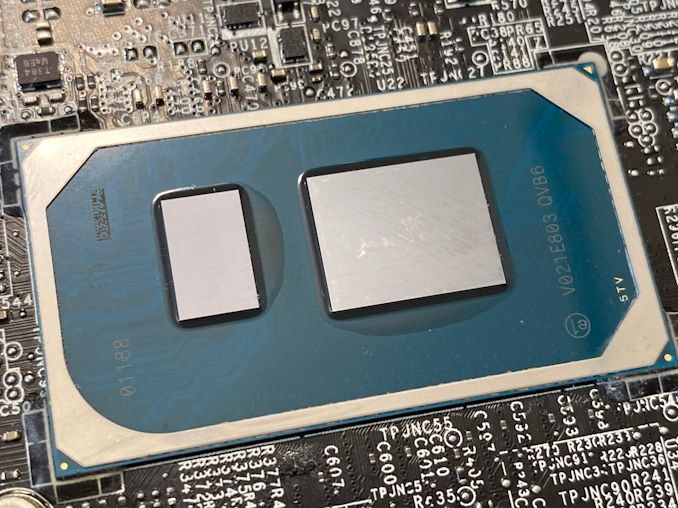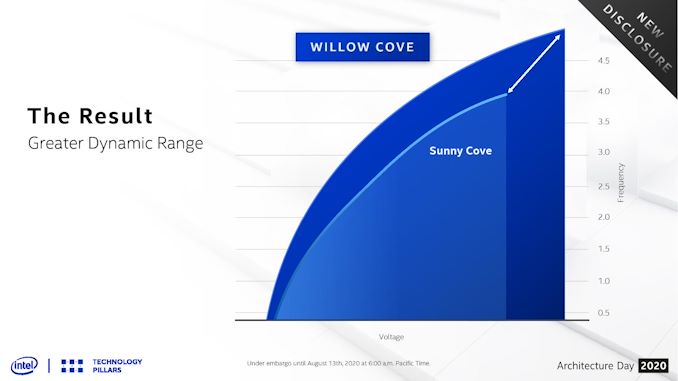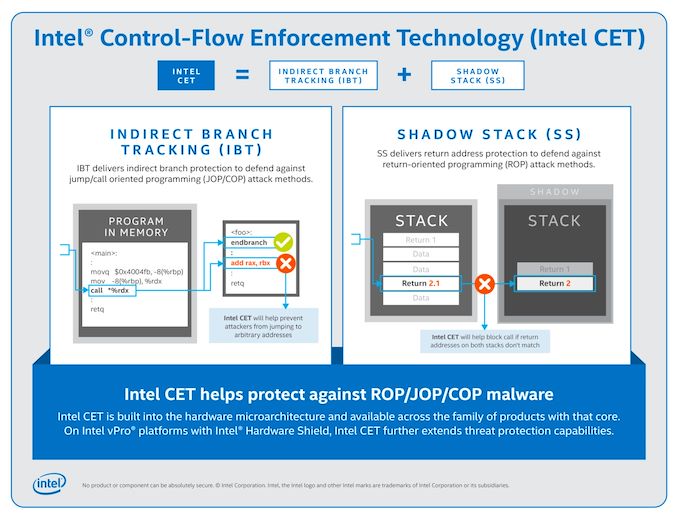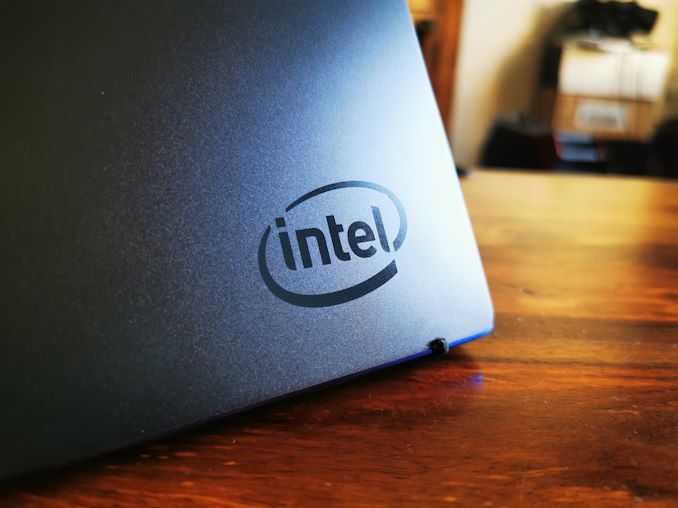Intel’s Tiger Lake 11th Gen Core i7-1185G7 Review and Deep Dive: Baskin’ for the Exotic
by Dr. Ian Cutress & Andrei Frumusanu on September 17, 2020 9:35 AM EST- Posted in
- CPUs
- Intel
- 10nm
- Tiger Lake
- Xe-LP
- Willow Cove
- SuperFin
- 11th Gen
- i7-1185G7
- Tiger King
Conclusion: Is Intel Smothering AMD in Sardine Oil?
Whenever a new processor family is reviewed, it is easy to get caught up in the metrics. More performance! Better power consumption! Increased efficiency! Better clock-for-clock gains! Amazing price! Any review through a singular lens can fall into the trap of only focusing on that specific metric. So which metrics matter more than others? That depends on who you are and what the product is for.
Tiger Lake is a mobile processor, featuring Intel's fastest cores and new integrated graphics built with an updated manufacturing process. This processor will be cast into the ultra-premium notebook market, as it carries the weight of the best Intel has to offer across a number of its engineering groups. Intel is actively working with its partners to build products to offer the best in performance for this segment right before a discrete GPU is absolutely needed.
As a road warrior, pairing the right performance with power efficiency is a must. In our benchmarks, due to the new process node technology as well as the updated voltage/frequency scaling, we can see that Tiger Lake offers both better performance at the same power compared to Ice Lake, but it also extends the range of performance over Ice Lake, assisted by that much higher turbo boost frequency of 4.8 GHz. When Tiger Lake gets into retail systems, particularly at the 15 W level, it is going to be fun to see what sort of battery life improvements during real-world workflows are observed.
As an engineer, genuine clock-for-clock performance gains get me excited. Unfortunately Tiger Lake doesn't deliver much on this front, and in some cases, we see regressions due to the rearranged cache depending on the workload used. This metric ignores power - but power is the metric on which Tiger Lake wins. Intel hasn't really been wanting to talk about the raw clock-for-clock performance, and perhaps understandably so (from a pure end-user product point of view at any rate).
Tiger Lake has updates for security as well as Control-Flow Enforcement Technology, which is a good thing, however these are held behind the vPro versions, creating additional segmentation in the product stack on the basis of security features. I’m not sure I approve of this, potentially leaving the non-vPro unsecure and trying to upsell business customers for the benefit.
The new Tiger Lake stills falls down against the competition when we start discussing raw throughput tests. Intel was keen to promote professional workflows with Tiger Lake, or gaming workflows such as streaming, particularly at 28 W rather than at 15 W. Despite this we can easily see that the 15 W Renoir options with eight cores can blow past Tiger Lake in a like-for-like scenario in our rendering tests and our scalable workloads. The only times Intel scores a win is due to accelerator support (AVX-512, DP4a, DL Boost). On top of that, Renoir laptops in the market are likely to be in a cheaper price bracket than what Intel seems to be targeting.
If Intel can convince software developers to jump on board with using its accelerators, then both the customers will benefit as will Intel’s metrics. The holy grail may be when it comes to OneAPI, enabling programmers to target different aspects of Intel’s eco-system under the same toolset. However OneAPI is only just entering v1.0, and any software project base building like that requires a few years to get off the ground.
For end-user performance, Tiger Lake is going to offer a good performance improvement over Ice Lake, or the same performance at less power. It’s hard to ignore. If Intel’s partners can fit 28 W versions of the silicon into the 15 W chassis they were using for Ice Lake, then it should provide for a good product.
We didn’t have too much time to go into the performance of the new Xe-LP graphics, although it was clear to see that the 28 W mode does get a good performance lift over the 15 W mode, perhaps indicating that DG1 (the discrete graphics coming later) is worth looking out for. Against AMD’s best 15 W mobile processor and integrated graphics, our results perhaps at the lower resolutions were skewed towards AMD, but the higher resolutions were mostly wins for Intel - it seemed to vary a lot depending on the game engine.
As a concept, Tiger Lake’s marketing frustrates me. Not offering apples-to-apples data points and claiming that TDP isn’t worth defining as a singular point is demonstrating the lengths that Intel believes it has to go to in order to redefine its market and obfuscate direct comparisons. There was a time and a place where Intel felt the need to share everything, as much as possible, with us. It let us sculpt the story of where we envisaged the market was going, and OEMs/customers were on hand to add their comments about the viewpoints of the customer base from their perspective. It let us as the press filter back with comments, critiques, and suggestions. The new twist from Intel’s client division, one that’s actually been progressing along this quagmire path, will only serve to confuse its passionate customer base, its enthusiasts, and perhaps even the financial analysts.
However, if we’re just talking about the product, I’m in two minds for Tiger Lake. It doesn’t give those raw clock-for-clock performance gains that I’d like, mostly because it’s almost the same design as Ice Lake for the CPU cores, but the expansion of the range of performance coupled with the energy efficiency improvements will make it a better product overall. I didn’t believe the efficiency numbers at first, but successive tests showed good gains from both the manufacturing side of Intel as well as the silicon design and the power flow management. Not only that, the new Xe-LP graphics seem exciting, and warrant a closer inspection.
Tiger Lake isn’t sardine oil basting AMD just yet, but it stands to compete well in a number of key markets.














253 Comments
View All Comments
deil - Thursday, September 17, 2020 - link
not rip as intel did respond already few times taking their 5% lead back against ryzen stack.Remember this chip will fight against zen3, which should be ~20% gains on AMD side.
This would be a great chip a year ago it would obliterate 3000 mobile on all fronts BUT against 4800u it seems like a strong contender, but it does not dethrone 4800u as best mobile chip, as you compare 15W with 28W here. This wins in thick bois, while AMD still is unrivaled for thin and light laptops.
FreckledTrout - Thursday, September 17, 2020 - link
Lets not go overboard there buddy. You have TGL in laptops beating AMD's almost 2 year old architectures since they run a little over a year behind using the prior generation architecture in the case of the GPU over 2 years old. When AMD moves to using current architectures in APU's I think things will be pretty darn close CPU side and AMD should win hands down with RDNA2.senttoschool - Thursday, September 17, 2020 - link
Zen3 on mobile is probably at least 9 months away. So TGL is competing against Renoir.AMDSuperFan - Thursday, September 17, 2020 - link
Fortunately we have Big Navi to help us out. I am looking forward to putting Intel back in their shoes with Big Navi.Showtime - Friday, September 18, 2020 - link
Who is "us" lol. Please go back to back AyMD reddit. We don't condone fanboism here.San Pedro - Friday, September 18, 2020 - link
I'm wondering if AMD is trying to push this forward.For now it seems like consumers can choose TGL or Renoir based on their use scenario.
AMDSuperFan - Monday, September 21, 2020 - link
Would it not be glorious for Zen 3 to come in at 5 watts with 50% performance as we can expect? 20% isn't so much but 50% would really change things.TheinsanegamerN - Thursday, September 17, 2020 - link
I wouldnt go that far. GPU wise Intel needs way more power to compete with the 15W reinor. Not to mention any laptop with sufficient thermal headroom can use thirde party software to raise TDP for ryzen 4000 mobile, gaining 15-20% performance in games.Other benchmarks go back and forth. On the surface intel might have a decent chip, but OEM implementation may not have the same performance.
Spunjji - Friday, September 18, 2020 - link
You hit the nail on the head here - it's going to be *highly* dependent on how OEMs implement it. Still, good to see they finally sorted their process out - the efficiency of this is markedly improved, it's basically what I expected from Ice Lake in the first place.AnarchoPrimitiv - Saturday, September 26, 2020 - link
Maybe for literally 3 more weeks until Zen3 comes out, then it's just more embarrassment for Intel added to years of embarrassment... Being beaten by a company with less than a tenth of the resources, there's literally no excuse for it